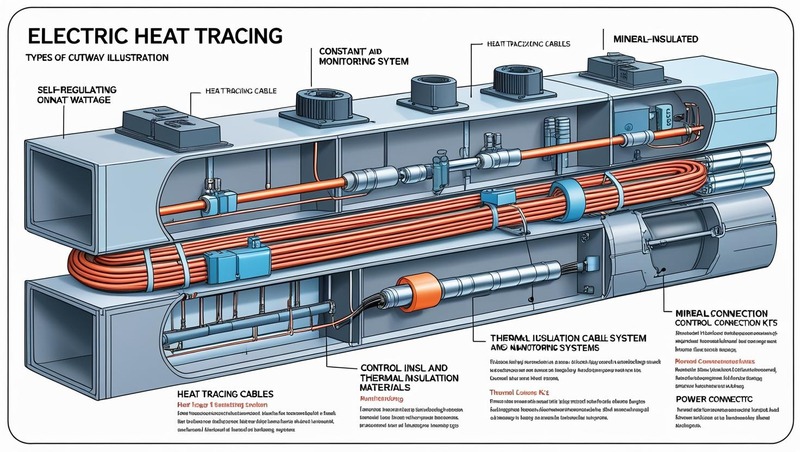The global electric heat tracing market is experiencing dynamic growth, fueled by increasing industrial activity, climate-related challenges, and the growing emphasis on energy efficiency. Electric heat tracing systems are widely used to maintain process temperatures, prevent pipe freezing, and ensure safety and reliability in industrial operations. Regional market trends reveal varying levels of adoption, driven by economic development, regulatory environments, climatic conditions, and industry-specific needs.
North America stands out as a mature and technologically advanced market for electric heat tracing. The region’s demand is largely supported by the oil & gas, chemicals, and power generation sectors, particularly in the United States and Canada. Harsh winters and sub-zero conditions in parts of North America necessitate the widespread use of heat tracing systems for freeze protection in pipelines and storage tanks. Additionally, strict safety regulations and the push toward replacing steam-based heating with electric alternatives are accelerating market growth in this region. The presence of leading manufacturers and ongoing investments in industrial automation further contribute to the strong market position of North America.
Download PDF Brochure @ https://www.marketsandmarkets.com/pdfdownloadNew.asp?id=88678555

Europe also holds a significant share in the global electric heat tracing market. Countries like Germany, the UK, Norway, and Russia have a well-established infrastructure for industrial operations that require precision heating solutions. Cold climatic conditions and stringent EU energy efficiency regulations have led to a shift from traditional systems to electric heat tracing. Furthermore, the European market is characterized by a high level of technological innovation, particularly in integrating IoT and digital control systems into heat tracing applications. This trend is expected to drive further adoption across industries such as chemicals, food processing, and renewable energy.
The Asia-Pacific region is emerging as the fastest-growing market for electric heat tracing systems. Rapid industrialization, urban development, and energy infrastructure expansion are key drivers of demand in countries such as China, India, Japan, and South Korea. The oil & gas, petrochemical, and power sectors are investing heavily in process optimization and safety enhancements, where electric heat tracing plays a critical role. While warmer climates in some parts of Asia may limit applications for freeze protection, the need for temperature maintenance in industrial processes remains high. Increasing awareness of energy efficiency and government initiatives to modernize industrial infrastructure are expected to further boost the market in this region.
Latin America and the Middle East & Africa represent promising but comparatively underpenetrated markets. In Latin America, Brazil and Mexico show potential due to growing industrial activity and investments in energy projects. The Middle East, known for its extensive oil & gas operations, is increasingly adopting electric heat tracing solutions to enhance operational reliability and process efficiency, particularly in areas where precise temperature control is crucial despite the arid climate.
Overall, the global electric heat tracing market shows strong growth potential, with regional dynamics influenced by industrial development, climatic conditions, regulatory frameworks, and technological readiness. As industries worldwide move toward more sustainable, automated, and efficient heating solutions, the demand for electric heat tracing systems is expected to expand across all major regions. By 2029, the market is likely to see accelerated growth, especially in emerging economies where infrastructure modernization and energy efficiency are becoming top priorities.